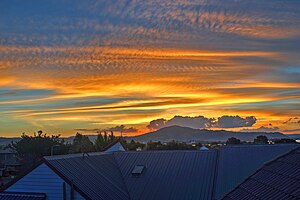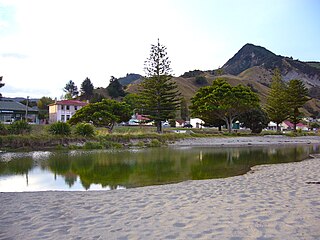Demographics
Lynmore covers 2.20 km2 (0.85 sq mi) [1] and had an estimated population of 3,510 as of June 2023, [2] with a population density of 1,595 people per km2.
Historical population| Year | Pop. | ±% p.a. |
|---|
| 2006 | 3,129 | — |
|---|
| 2013 | 3,255 | +0.57% |
|---|
| 2018 | 3,288 | +0.20% |
|---|
| Source: [6] |
Before the 2023 census, the suburb had a smaller boundary, covering 1.97 km2 (0.76 sq mi). [1] Using that boundary, Lynmore had a population of 3,288 at the 2018 New Zealand census, an increase of 33 people (1.0%) since the 2013 census, and an increase of 159 people (5.1%) since the 2006 census. There were 1,179 households, comprising 1,596 males and 1,692 females, giving a sex ratio of 0.94 males per female. The median age was 41.7 years (compared with 37.4 years nationally), with 693 people (21.1%) aged under 15 years, 492 (15.0%) aged 15 to 29, 1,590 (48.4%) aged 30 to 64, and 513 (15.6%) aged 65 or older.
Ethnicities were 81.0% European/Pākehā, 16.8% Māori, 2.7% Pacific peoples, 11.9% Asian, and 2.1% other ethnicities. People may identify with more than one ethnicity.
The percentage of people born overseas was 24.5, compared with 27.1% nationally.
Although some people chose not to answer the census's question about religious affiliation, 54.4% had no religion, 34.7% were Christian, 0.4% had Māori religious beliefs, 1.4% were Hindu, 0.6% were Muslim, 0.4% were Buddhist and 2.3% had other religions.
Of those at least 15 years old, 816 (31.4%) people had a bachelor's or higher degree, and 273 (10.5%) people had no formal qualifications. The median income was $41,400, compared with $31,800 nationally. 669 people (25.8%) earned over $70,000 compared to 17.2% nationally. The employment status of those at least 15 was that 1,410 (54.3%) people were employed full-time, 426 (16.4%) were part-time, and 75 (2.9%) were unemployed. [6]
This page is based on this
Wikipedia article Text is available under the
CC BY-SA 4.0 license; additional terms may apply.
Images, videos and audio are available under their respective licenses.













